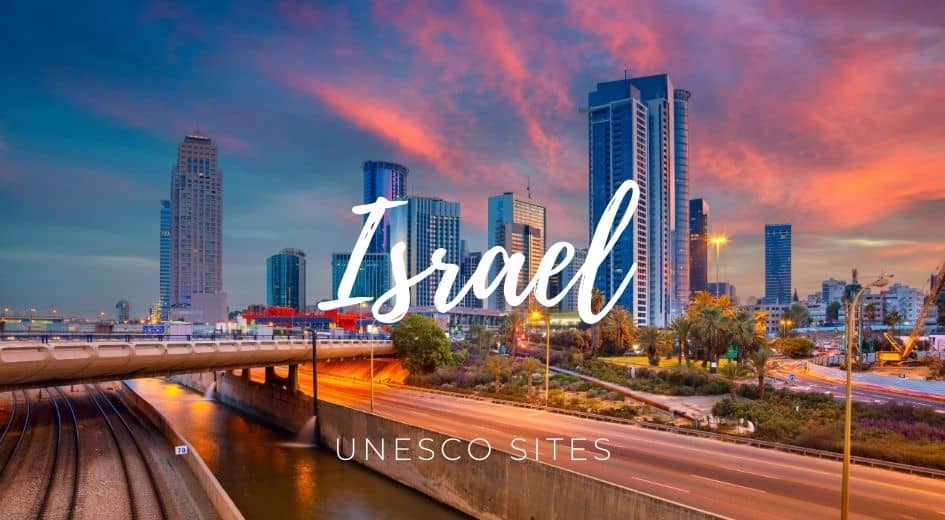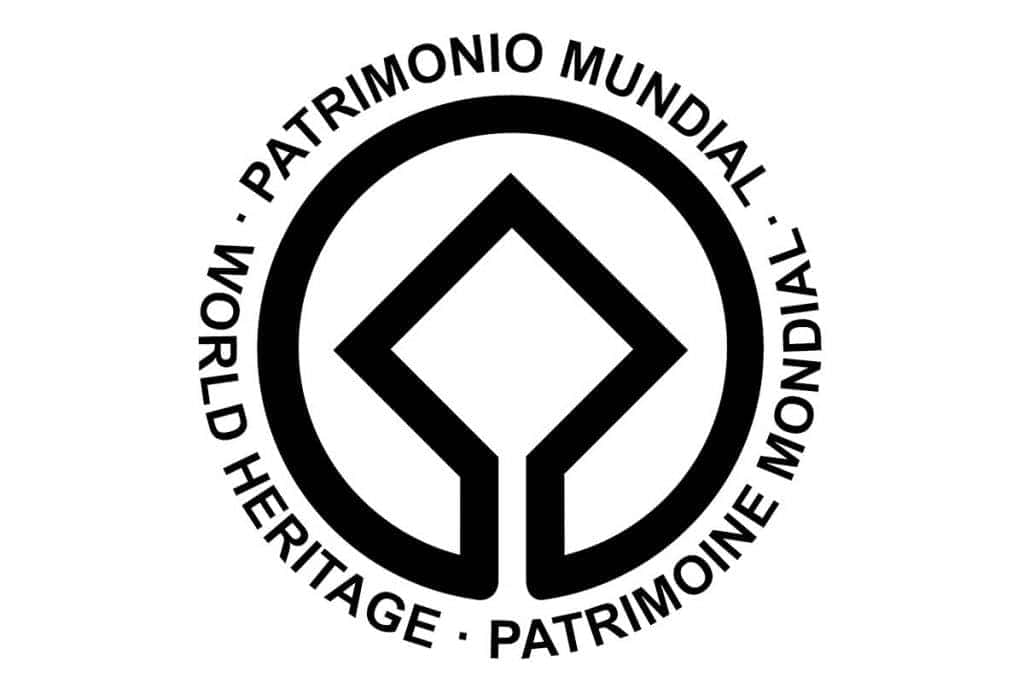Table of Contents


Israel UNESCO has registered 9 sites on the World Heritage list and 18 on the tentative list.
Some places are so interesting that it’s relevant to keep them for future generations. This is why UNESCO has built a list of crucial classified properties in which superb places stand out for their aesthetic, natural, artistic, or cultural significance.
More than a thousand places are registered as Unesco’s World Heritage worldwide. Due to my interest in visiting World Heritage sites, I compiled the UNESCO list in Israel and the corresponding map.
Israel UNESCO list
- Bahá’i Holy Places in Haifa and the Western Galilee
- Biblical Tels – Megiddo, Hazor, Beer Sheba
- Caves of Maresha and Bet-Guvrin in the Judean Lowlands as a Microcosm of the Land of the Caves
- Incense Route – Desert Cities in the Negev
- Masada
- Necropolis of Bet She’arim: A Landmark of Jewish Renewal
- Old City of Acre
- Sites of Human Evolution at Mount Carmel: The Nahal Me’arot / Wadi el-Mughara Caves
- White City of Tel-Aviv – the Modern Movement
Israel UNESCO Map
Click on the blue pins to view more relevant information about each World Heritage site in Israel.
Description
- Bahá’i Holy Places in Haifa and the Western Galilee: This site is located in northern Israel and includes the Shrines of Bahá’u’lláh and the Báb, two important figures in the Bahá’í Faith, as well as several other buildings and gardens. The site is considered the holiest place for members of the Bahá’í Faith.
- Biblical Tels – Megiddo, Hazor, Beer Sheba: This site is a group of three archaeological sites in Israel that date back to the Bronze Age. The sites are Megiddo, Hazor, and Beer Sheba. They are significant because they provide evidence of ancient biblical cities and help shed light on life in the region during that period.
- Caves of Maresha and Bet-Guvrin in the Judean Lowlands as a Microcosm of the Land of the Caves: This site is a series of underground caves and tunnels in the Judean Lowlands of Israel. The caves were used for various purposes throughout history, including burial sites, quarries, and hideouts. The site provides a unique glimpse into the history and culture of the region.
- Incense Route – Desert Cities in the Negev: This site is a network of ancient cities and trade routes located in the Negev Desert in southern Israel. The site was an important trade route for incense and other commodities in ancient times, and it included several cities and fortresses used by travelers and traders.
- Masada: This site is a fortress located on a plateau in the Judean Desert in Israel. It is famous for its role in a Jewish revolt against the Roman Empire in the 1st century AD. The site includes the remains of a palace, a synagogue, and other buildings, as well as impressive fortifications and defensive structures.
- Necropolis of Bet She’arim: A Landmark of Jewish Renewal: This site is a burial site in northern Israel that dates back to the 2nd century AD. It includes many tombs and catacombs decorated with intricate artwork and inscriptions. The site is significant because it provides insight into the funerary practices and beliefs of the Jewish people during that period.
- Old City of Acre: This site is a historic city on Israel’s Mediterranean coast. It has a long and rich history that dates back to the time of the Phoenicians. It includes several important historical landmarks, such as the ancient city walls, the Crusader fortress, and the Ottoman-era buildings.
- Sites of Human Evolution at Mount Carmel: The Nahal Me’arot / Wadi el-Mughara Caves: This site is a group of prehistoric caves located on the slopes of Mount Carmel in northern Israel. The caves contain evidence of human habitation and evolution dating back to the Lower Paleolithic period. They are significant because they provide insight into human society and culture’s development for thousands of years.
- White City of Tel-Aviv – the Modern Movement: This site is a collection of more than 4,000 buildings in Tel Aviv, Israel, built during the 1920s and 1930s. The buildings are notable for their unique architectural style, blending European modernism with local design elements. The site is significant because it provides a window into the early years of the modern State of Israel and its architectural and cultural identity development.
UNESCO World Heritage Sites in Israel have protected places for their cultural and natural importance.
Sites on the Tentative List
- Triple-arch Gate at Dan & Sources of the Jordan
- Early Synagogues in the Galilee
- The Galilee Journeys of Jesus & the Apostles
- Sea of Galilee & its Ancient Sites
- Horvat Minnim
- Arbel (Arbel, nebe shueb, horns of hittim)
- Degania & Nahalal
- Bet She’an
- Caesarea
- White Mosque in Ramle
- Jerusalem*
- Makhteshim Country
- Mount Karkom
- Timna
- The Crusader Fortresses
- The Great Rift Valley – migratory routes – The Hula
- Liftah (Mey Naftoah) – Traditional mountain village
- Ein Karem, a village and its cultural landscape


